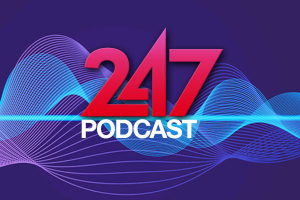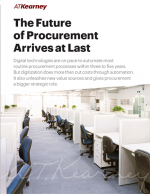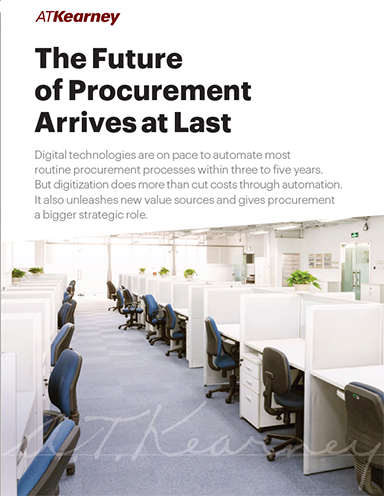The Future of Procurement Arrives at Last
This paper details how digital technologies are on pace to automate most routine procurement processes within three to five years.
Procurement: Ripe for Reinvention
In many ways, today’s procurement organizations resemble white-collar versions of manufacturing in the 1970s.
Manual processes still dominate procurement, even as automation transforms other business functions.
Legions of staffers handle low-value sourcing and demand-management activities at the bottom of The Purchasing Chessboard, where they have more leverage over suppliers or the ability to influence users.
Routine, labor-intensive transactional activities - pricing negotiations, contract awards, supplier performance monitoring - consume time and attention.
Procurement workers also spend hours piecing together fragmented information flows from myriad transactions, a task-technology could perform in seconds. Internal stakeholders, meanwhile, grow frustrated by what they perceive as slow service from procurement and yearn for self-service options and direct access to end-to-end data streams.
Procurement Technology Comes of Age
Today, few procurement processes are fully automated, and end-to-end information transparency is limited in most categories. True, large global manufacturers have automated replenishment and other direct spending categories. But manual processes persist for indirect expenditures, and many companies haven’t automated all direct categories.
Blame sluggish innovation by traditional software vendors or resistance to new technologies by procurement stakeholders - or both - but lagging technology adoption is holding the function back. Procurement organizations often can’t identify their entire spend, complete catalog systems, or fully utilize sourcing software. Chief procurement officers are left to hope major vendors will someday offer a user-friendly technology that achieves critical-mass adoption.
That technological tipping point is here. AI, blockchain, and the Internet of Things (IoT) transform how users interact with technology. And they’re converging to form fully autonomous procurement tools that will run the entire procure-to-pay process, including contract generation.
Amazon is building a system that will automatically solicit bids, evaluate responses, and award business. Data input and classification will become much more accurate when intelligent systems start executing transactions independently; some companies already use AI to classify spend.
Even more impressive is the potential of AI and blockchain to track contract compliance in real time, a feat nearly impossible for today’s archaic systems.
What’s Related




Favorites





